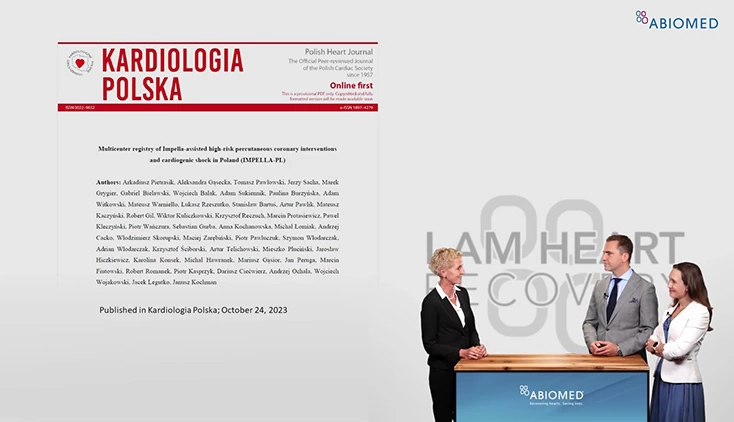Protected PCI
Optimized Patient Selection in High-Risk Protected Percutaneous Coronary Intervention
by Juergen Leick, Nikos Werner, Norman Mangner, Vasileios Panoulas, Christina Aurigemma
Patients undergoing elective high-risk PCI are often in critical condition and not candidates for coronary artery bypass graft (CABG) surgery. These patients require complex interventions that may entail rotational atherectomy or intravascular lithotripsy, which often involve lengthy procedures. Percutaneous left ventricular assist devices (pLVADs) have the potential to minimize the risk of hemodynamic deterioration during the procedure, but they are associated with risks and require experienced interventional cardiologists. Thus, the authors of this article write “Patient selection is an essential key feature to a safe and successful outcome.”
In this article, the authors describe the rationale, indication, and patient selection criteria for the use of pLVAD in high-risk percutaneous coronary intervention (HRPCI). They examine pre-procedural assessment to clarify contraindications, the definition of HRPCI and evidence for use of pLVAD in HRPCI. They present a scoring system intended to function as a surrogate parameter for the complexity of the intervention.
While there is no clearly established definition of high-risk PCI, the authors explain that there is growing consensus that multiple factors must be considered to define complexity in HRPCI. These include:
- Hemodynamic status
- Left ventricular ejection fraction (LVEF)
- Clinical characteristics
- Concomitant diseases
- Complexity of coronary anatomy/lesions
"Patient selection is an essential key feature to a safe and successful outcome."
They highlight that in addition to LVEF, LV end-diastolic volume (LVEDV) and LV end-diastolic pressure (LVEDP) can help assess risk for hemodynamic deterioration in specific patient populations. If available, they also suggest considering cardiac index, pulmonary artery pressure, and pulmonary capillary wedge pressure, as well as the British Cardiovascular Intervention Society myocardial jeopardy score (BCIS-JS) to help identify patients who may benefit from Impella heart pump support.
While acknowledging that pLVADs are commonly used in HRPCI, the authors emphasize that there is limited published data and no clear guideline recommendations. They present the available data for the benefits of Impella heart pump support in the setting of HRPCI (eg, PROTECT II, PROTECT III, USpella registry data, R-IMP-IT study) and recommend considering hemodynamic support with a pLVAD “in patients with severely reduced LVEF and planned complex revascularization, and in patients with highly jeopardized myocardium, particularly for unprotected LM, last remaining conduit, or multivessel disease.” They also strongly recommend LV support in patients with pre-existing hemodynamic impairment. They conclude, “In the absence of significant evidence-based knowledge, the multidisciplinary team, patient features, clinical conditions, and the respective experience of all team members play a major role in the decision-making regarding the use of protected PCI.”
Sign Up for Latest Updates
NPS-3420



